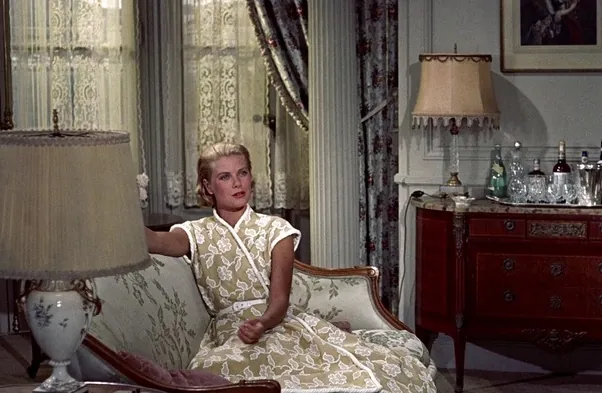Beyond the Crime Scene: The Importance of Emotions in Crime Fiction

Are you a fan of crime fiction novels that keep you on the edge of your seat with every turn of the page? Do you love the thrill of trying to solve a mystery alongside your favorite protagonist? Well, have you ever thought about what your crime fiction hero goes through on an emotional level?
In today’s world, crime fiction has become a popular genre among readers. From police officers to private investigators, readers are used to a certain type of main character. They are often tough, gritty, and determined to solve the case at all costs. But is that all there is to it? Should your crime fiction protagonist have an emotional arc, or is it just an extra or even unnecessary addition to your story?
Let’s explore the importance of giving your crime fiction protagonist an emotional journey. We’ll talk about why a well-rounded character is important and how it can make your story better.
Emotional Detachment: Why Your Crime Protagonist May Not Need an Emotional Arc
While creating an emotional arc for your crime protagonist can add depth and complexity to your story, it’s important to remember that it may not always be necessary. In fact, some readers of crime fiction might prefer a main character who doesn’t care about the crimes they are trying to solve.
This type of protagonist can add a different kind of tension to the story. By getting rid of his or her feelings, the main character becomes a logical, analytical thinker who is only interested in solving the crime. This can give the reader a sense of distance that lets them think like the main character and try to solve the case with no emotional bias.
Also, a protagonist who doesn’t show much emotion can add a sense of mystery and intrigue to the story. By not knowing what the protagonist is feeling or thinking, readers are left to their own devices to try and figure out their motivations and desires. This can create a sense of unpredictability that keeps the reader engaged and interested in the story.
It’s also worth noting that some types of crime fiction, like police procedurals or detective novels in the noir style, may work better with a protagonist who doesn’t feel anything. These genres tend to focus more on the crime itself and less on the emotional journey of the protagonist.
In the end, an emotional arc can give your crime protagonist more depth and complexity, but you should think about whether it’s important for your story. A character who isn’t affected by the story’s events can add a different kind of tension and intrigue, letting readers focus more on the crime itself. So, before you start writing, consider whether an emotional arc is right for your protagonist and your story.
Creating Emotional Depth: How to Craft Emotional Moments for Your Crime Fiction Protagonist
While an emotionally detached crime protagonist can add a unique layer to a story, creating emotional moments for your character can make them more relatable and human. Here are some tips on how to create emotional moments for your crime fiction protagonist:
- Specific Scene: One of the most effective ways to create emotional moments for your protagonist is to place them in a specific scene that evokes an emotional response. For example, you can have your protagonist revisit a location that holds personal significance to them, or put them in a high-pressure situation where they have to make a difficult decision.
- Emotional Response to a Character: Another way to create emotional moments for your protagonist is to have them develop a strong emotional response to another character in the story. This can be a love interest, a mentor, or even an enemy. By creating a dynamic relationship between your protagonist and another character, you can add a layer of emotional depth to your story.
- Emotional Response to Setting: Finally, you can create emotional moments for your protagonist by using the setting to evoke an emotional response. This could be a dark and gritty urban environment that reflects the protagonist’s inner turmoil, or a peaceful and idyllic countryside that creates a sense of calm and reflection.
Sample Emotional Moments:
- Your protagonist is forced to confront their past when they return to their childhood home.
- Your protagonist must choose between saving an innocent bystander or catching the criminal they are pursuing.
- Your protagonist develops a romantic relationship with a fellow detective, only to have it end in tragedy.
- Your protagonist is betrayed by a trusted colleague and must grapple with their feelings of anger and betrayal.
- Your protagonist finds themselves in a dangerous situation and must overcome their fears to save themselves and others.
Adding emotional moments for your main character in a crime fiction story can give it more depth and complexity. You can make a main character that people really care about by using specific scenes, giving them interesting relationships with other characters, and using the setting to make people feel something. So, don’t be afraid to add a little emotion to your crime fiction story and create a protagonist that readers will remember long after they finish the book.
Author’s Choice: The Debate Between Emotional Moments and Emotional Arc for Your Crime Fiction Protagonist
As a writer, it’s up to you to decide if the main character in your crime fiction story should go through an emotional arc or if there should be emotional moments throughout the story. But how do you decide which is the best approach for your character and your story?
One approach is to consider the overall tone and theme of your story. If you are writing a gritty, noir-style crime novel, an emotionally detached protagonist may better suit the tone of your story. But if you want to show how crime affects your main character’s mind, an emotional arc might be a better choice.
Another factor to consider is the genre of your story. Certain genres, such as police procedurals, may place more emphasis on the crime and less on the emotional journey of the protagonist. A psychological thriller, on the other hand, might need a more complicated emotional arc to build tension and suspense.
Ultimately, the decision to create emotional moments or an emotional arc for your crime fiction protagonist comes down to your personal writing style and what you feel will best serve the story. Some writers like to put emotional moments in their stories so that the reader feels them right away, while others like to make the main character’s emotional journey slower and more gradual.
In conclusion, there is no one right way to approach the emotional depth of your crime fiction protagonist. Whether you choose to create emotional moments throughout the story or develop a full emotional arc, it’s important to consider the tone and genre of your story and what will best serve the narrative. So, trust your instincts as a writer and make a main character that readers will connect with and remember.
Enhancing Your Crime Fiction Protagonist: Why Adding an Emotional Arc Can Engage Readers, Especially Female Audiences of Cozy Mysteries
If you write cozy mysteries, you might be wondering how to come up with a main character that will appeal to your mostly female readers. Even though a tough, no-nonsense detective might work for some types of crime fiction, giving your cozy mystery protagonist an emotional arc can make them more likable and interesting, which will keep readers coming back for more.
By giving your main character a relatable emotional journey, you create a character readers can relate to and root for. This can be especially important in cozy mysteries, which often center around a tight-knit community where readers feel like they are part of the story.
An emotional arc can also create tension and suspense in the story. By giving your protagonist a personal stake in the case, you add an extra layer of motivation that will keep readers engaged and guessing until the end.
Here are some tips for enhancing your cozy mystery protagonist with an emotional arc:
- Focus on Relationships: Cozy mysteries often revolve around interpersonal relationships, so it’s important to develop your protagonist’s relationships with other characters. This can be romantic, familial, or platonic, and can create emotional moments that will engage readers.
- Create Personal Stakes: By giving your protagonist a personal stake in the case, you create a sense of urgency and motivation that will drive the plot forward. This could be a personal connection to the victim or fear for their own safety.
- Use the Setting to Create Mood: Cozy mysteries often have a specific setting, such as a small town or a bed and breakfast. Use the setting to create a mood that reflects your protagonist’s emotional journey. For example, a stormy night could reflect a moment of inner turmoil for your protagonist.
By giving the main character of your cozy mystery an emotional arc, you can make her more likable and interesting to your mostly female audience. By focusing on relationships, creating personal stakes, and using the setting to create mood, you can create a protagonist that will keep readers coming back for more. So, don’t be afraid to add a little emotion to your cozy mystery and create a character that readers will root for until the very end.
Your Character, Your Story, Your Choice: The Importance of Creating Emotional Depth in Crime Fiction Protagonists
As a writer of crime fiction, it’s up to you to decide if your main character should have an emotional arc or if there should be emotional moments throughout the story. Both ways have their good points, but it’s important to think about your character and your story to figure out what will work best for the plot.
Whether you choose to create a tough and emotionally detached protagonist or a relatable and engaging character with a personal journey, the most important thing is to create a character that resonates with your readers. A well-made main character can add to the plot and make the reader feel more connected to the story.
Remember, your character is the heart of your story, and it’s up to you to bring them to life in a way that engages and captivates your readers. So don’t be afraid to take risks, experiment with different approaches, and ultimately trust your instincts. After all, it’s your character, your story, and your choice.
Photo by Mohamad Khosravi on Unsplash






